This problem is acute both for the owners of bathing and health complexes, and for the owners of private houses who have their own baths in the garden or at home. Cleaning the bath and sauna is a responsible process, so we will describe it in detail.
Sauna cleaning features
Table of Contents
In fact, the main difference is immediately visible: in the sauna, the vast majority of surfaces are wooden, and the humidity is constantly high. However, it depends on the type of bath: in Russian it is wet, in Finnish it is dry, in Turkish, for example, it is also wet, but stone is used. Wood and moisture bring us to the main point: the sauna is very prone to fungal attack! Of course, there are special preparations for treating wood from mold, but an ideal result can only be achieved with constant cleaning.
For owners of sauna where the sauna is in constant use, separate cleaning services are provided. Cleaning is done after each client, after the end of the working day, a general cleaning is periodically carried out.
You also need to clean the bathroom, depending on your workload: once a week or more often if it is used frequently.
By what signs can you tell that it’s definitely time to start cleaning the bathroom:
- Bad bad air.
- The smell of “marsh” dampness.
- Wood darkening.
- Weekly cleaning
First of all, material debris is removed from the bathroom – this can be done with a broom, a brush with a long handle. At this stage, we remove pieces of paper from the brooms, hair, ropes, trimmings of cosmetic labels and other “bathroom debris”. Be sure to look under the shelves: everything accumulates there very quickly.
Then you need to wash the walls well (usually they are tiled), treat them with an antiseptic and wipe them dry. The same applies to the shelves: they need to be washed with detergents, wiped dry. Small windows are usually made in the bathroom, which are constantly covered with condensate, so the window must also be washed with glass cleaner. The floor in the bathroom, like everywhere else, is washed last. After cleaning, leave the bath open for a while so that everything inside dries well. Drying the room completely, along with the use of disinfectants, will protect you from the spread of mold.
If you experience an unpleasant musty smell in the bathroom, before cleaning, do the following: Heat the bathroom hot, open all dampers and ventilation ducts, and pour several buckets of clean cold water into the hot bathroom. It is important to do this separately, and not in the shower, because it is the remains of foam and sweat that can cause these odors. The water will evaporate and reveal all the “flavors”. After that, start cleaning.
General cleaning of the sauna
It all starts the same way with garbage collection. You can then remove dark spots from wood surfaces. This is done with a brush and detergent. But if the stain is deep, only sandpaper will help.
- Wash the walls and ceiling in the sauna with a brush with telescopic handles. You may need products to remove soot and grease. Limescale builds up on the cooker tank – clean it with the right chemicals or vinegar and lemon juice.
- Remove all metal trays, shelves and grates that store cosmetics. All of them can be washed, treated from plaque and dried.
- Treat wooden surfaces with an antiseptic. Wash the floor well.
General cleaning in the bathroom is a very tiring task, despite the fact that the size of the sauna is usually small. To really clean the steam room and prevent the spread of fungus, use the services of cleaners. With the help of professional chemicals, powerful disinfectants and special equipment, the masters will bring the bathroom into perfect order. The purer it is, the better for your health. And, of course, the dryness and cleanliness of the bathroom is the key to its “longevity”.
How to clean the sauna
Recently, sauna services have become more popular. Dozens of people visit the sauna during the day, so it is very important to follow the hygiene requirements and keep the room clean. When cleaning the sauna, it is important not only to wash the floors, but also to monitor the condition of the walls, benches and doors.
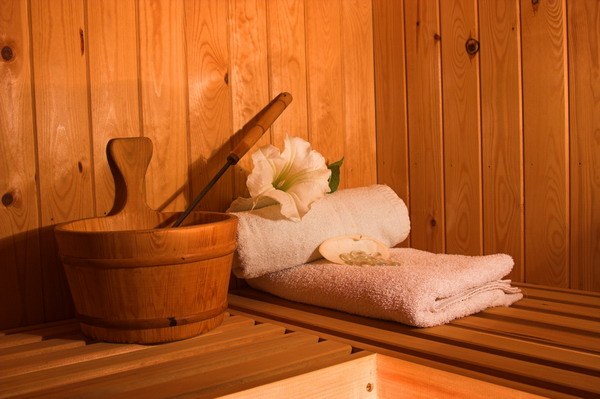
Purchase of special protective equipment for regiments. Please note that it must be based on paraffin oil. Do not use products made from vegetable oils, as their use contributes to the rapid reproduction of fungi.
Wash the sauna half an hour before heating it. Further heating will lead to rapid drying of the walls and floor of the room.
Treat all shelves and tables with an alkaline disinfectant cleaner and rinse thoroughly with cold water after treatment. Be sure to dry the wet area well.
After each use, the sauna must be dried, otherwise mold and fungus may appear on the walls and floor. Therefore, let the heater work for another thirty minutes and only then turn it off.
Wipe glass doors and tile surfaces with a clay-based cleaner. Glass surfaces should be thoroughly rinsed and dried after each use. If this is not done, limescale will form on the glass, which will be very difficult to remove.
Treat load-bearing beams, frame structures and other supports with a compound to protect the boards. Wipe the ends of the structure several times, because it is through these places that moisture penetrates inside.
To clean the floors under the shelves, carefully separate the bottom frame of the shelf. You can do it without the help of any tools. After cleaning, wipe the floors dry and install the frame in place. Check if you installed it correctly.
Related video.
If possible, the surface of wooden shelves should be treated with paraffin oil. This can be done with an ordinary small brush. Just be careful and make sure that the applied layer lies evenly and does not spread.
Forgot your password? Not registered yet?
Sauna or home bath is a great way to relax after a hard day’s work. But in order to fully enjoy the benefits of the bathroom, it must be kept clean. And it’s not difficult at all, at least not much more difficult than cleaning the bathroom.
How to clean your home bath or sauna
To clean the steam room you will need:
- sponge;
- broom;
- vacuum cleaner;
- towels;
- liquid cleaning solution;
- medium grit sandpaper;
- Special detergents and disinfectants.
Specialty shops sell bathroom cleaners containing hydrogen peroxide (3% solution), which decomposes into water and oxygen upon evaporation, both harmless substances.
Use special sauna cleaners according to the manufacturer’s recommendations on the packaging.
Regular cleaning of a bath or sauna is a very important procedure that must be done every time after using them.
Clean the sauna from top to bottom, take a broom with a vacuum cleaner and remove visible dust and debris from the floor and seats.
It is not necessary to constantly rub the wooden wall panels, it is enough to wipe them with a damp cloth from time to time if they are visibly dirty.
But tiles should always be wiped dry after using the steam room to prevent water or lime stains.
To keep the tree looking perfect for as long as possible, cover the benches with towels when you sit on them. This will protect the wood from sweat, which will discolor the wood.
But do not use towels washed with strong detergent. Potential chemical residues can also seriously damage your seats over time.
Before visiting the steam room, take a shower to cleanse your skin and hair of dirt, sweat and cosmetic residues such as perfume, deodorant, body lotion, cream, makeup, etc. Thus, only pure sweat will drain from you, and not a colorful chemical cocktail of dirt and cosmetic residues, which, due to high temperature, creates dangerous fumes of synthetic substances.
If you use the bathroom a lot, you should clean the benches weekly, but if you take a steam bath from time to time, you should not clean the wood as often.
Buy a special liquid detergent, mix it with water in the indicated proportions and thoroughly clean the wooden surfaces.
Then wipe the tree with a “technical” towel to dry it.
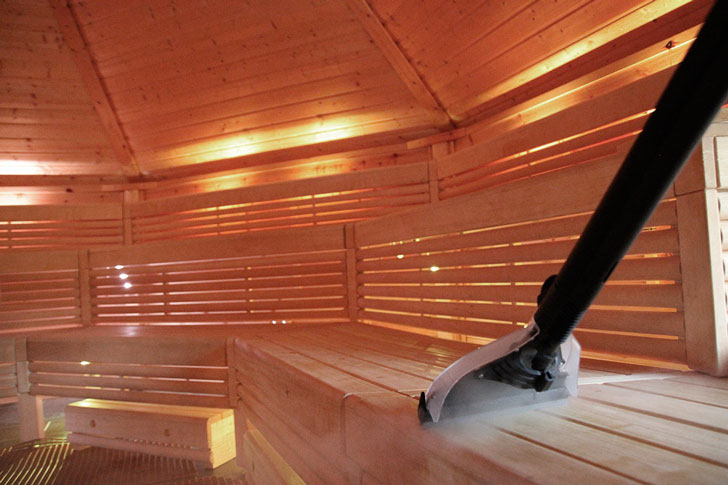
Due to frequent heating, the wood in the sauna changes color. This may not happen in the coming years, but it will definitely happen. So when the color becomes apparent, take a medium grit sandpaper and run it over the wood.
If your sauna is heated with wood, clean it regularly of ash and soot and periodically check the chimney for soot and creosote, which are a serious fire hazard.
If the steam room is heated by an electric heater, wipe the stainless steel once a month to prevent build-up.
Finally, if the stones are used to produce steam, check them every two weeks for cracks. Replace cracked stones with new ones.
How is the sauna disinfected?
In a classic sauna, especially in the upper part, the temperature is so high that it is enough to naturally disinfect the ceiling and the top row of seats.
Disinfection of the remaining steam room once every two months with special disinfectants, according to the recommendations of the manufacturers.
Avoid chlorine-based disinfectants that bleach and discolor wood.
Additional tips and warnings
- Do not use detergents and cleaners containing ammonia, as it releases toxic fumes when the steam room is heated.
- If the electric heater is out of order, do not repair it yourself, contact a professional electrician or electrician service person.
By the way, this is our last post, where we told you how to quickly clean a towel from fresh stains. This information may also be useful to you.
The cleanliness of the sauna is just as important as the cleanliness of the entire sauna complex. Both the sauna and the washing room and dressing room must be kept clean. A clean sauna looks neat and smells good. With the help of pre-treatment and then regular cleaning, the sauna compartment can stay in good condition for longer, and you can bathe in a pleasant environment.
Cleaning a sauna is not only a matter of room cleanliness, as materials wear out the faster the more they are neglected. The frequency of cleaning and cleaning the sauna depends on how often you bathe in it. If the sauna is used, for example, daily and there are many users, the sauna should be washed at least once a month. The sauna should be cleaned thoroughly twice a year.
Basic measures help keep the sauna clean
When the cleanliness of the sauna is really taken care of during soaking, cleaning becomes easier. Shelf surfaces remain clean when shelves and benches are covered with sheets. When most of the dirt and moisture remains on the sheets, the shelving does not need constant cleaning. The best fabric for shelving protection. Surface treatment with a protective agent also increases shelf life.
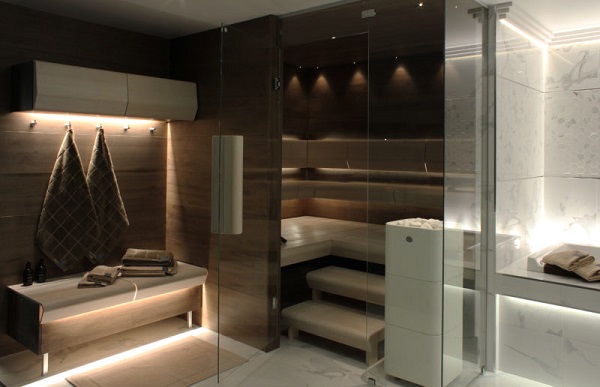
It is worth noting that while vaping, in addition to sweat, dirt and dead skin cells are exfoliated from the body. About 10 grams of these substances (that is, about 1.5 teaspoons) are released from a person on each flight, therefore, in the absence of rack protection and neglect of hygiene, dirt quickly accumulates between shelves and even under shelves. Therefore, before vaping, it is important to wash yourself well.
However, preliminary measures do not preclude the need for a thorough cleaning of the sauna, as dirt can still form on the surfaces in the sauna. In addition, water from the heater seeps onto the floor, and with it small stone chips fall on the floor, which must be cleaned regularly.
Sauna needs to dry
The ventilation of the sauna must be efficient, because wooden structures deteriorate if they are not completely dried. Good ventilation is especially important in saunas where there is no window to open. The sauna dries faster if you let the heater run for 10 minutes after steaming or if you add some wood to the wood stove. It is also worth airing the sauna, but only after it has completely cooled down.
Hygiene is also affected by the heating temperature of the sauna. If it is always heated only to 50-60 degrees, then at this temperature some bacteria survive. And in a hot sauna, for example, in a black bath, bacteria simply die from high temperature, so sauna structures remain in good condition much longer.
TAIVE shelves make sauna cleaning easier
Already at the sauna planning stage, it is useful to think about how the sauna will be cleaned and cleaned. Some models of shelves make it difficult to clean or block access under the shelves.
Cariitti TAIVE shelves can be easily removed for cleaning the sauna and shelves. Shelves are recommended to be treated with protective wax, which will protect the shelves from moisture and dirt. Thus, the shelves are easy to keep clean and retain their appearance for a long time.
Silicone pads are installed under the TAIVE seat elements, which not only prevent the formation of annoying squeaks on the shelves, but also create a gap between the shelf and the frame through which moisture can be removed from the surface. The backrest elements also contribute to the cleanliness of the sauna, as they prevent dirt from getting on the walls. The back panels are also removable for washing.
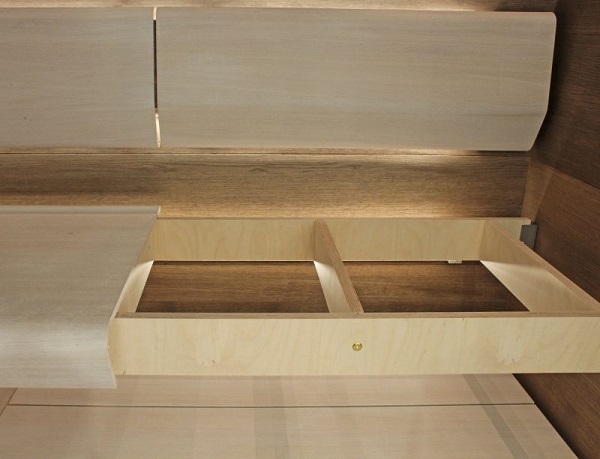
Tips for washing in the sauna
- To wash the sauna, use detergents intended for wooden surfaces. Do not use materials containing chlorine compounds, as they may evaporate into the air when the sauna is heated.
- Use a soft brush or special products to clean the sauna.
- Pour warm water over the surface before washing to open the pores of the wood. At the end of the wash, rinse the surfaces with cold water to close the pores of the wood.
- Thoroughly wash the walls and glass doors, because when dirt accumulates, it quickly becomes untidy.
- Wipe doorknobs, because they accumulate a lot of bacteria.
- Don’t forget to clean the drain to prevent blockages and odors.
More information about the TAIVE collection can be found at www.cariitti.com or at the Cariitti showroom in Espoo.
The sauna specialist in this article was the head of Sauna From Finland, Mr. Pekka Kruuk, who is one of the official sauna auditors in Finland.
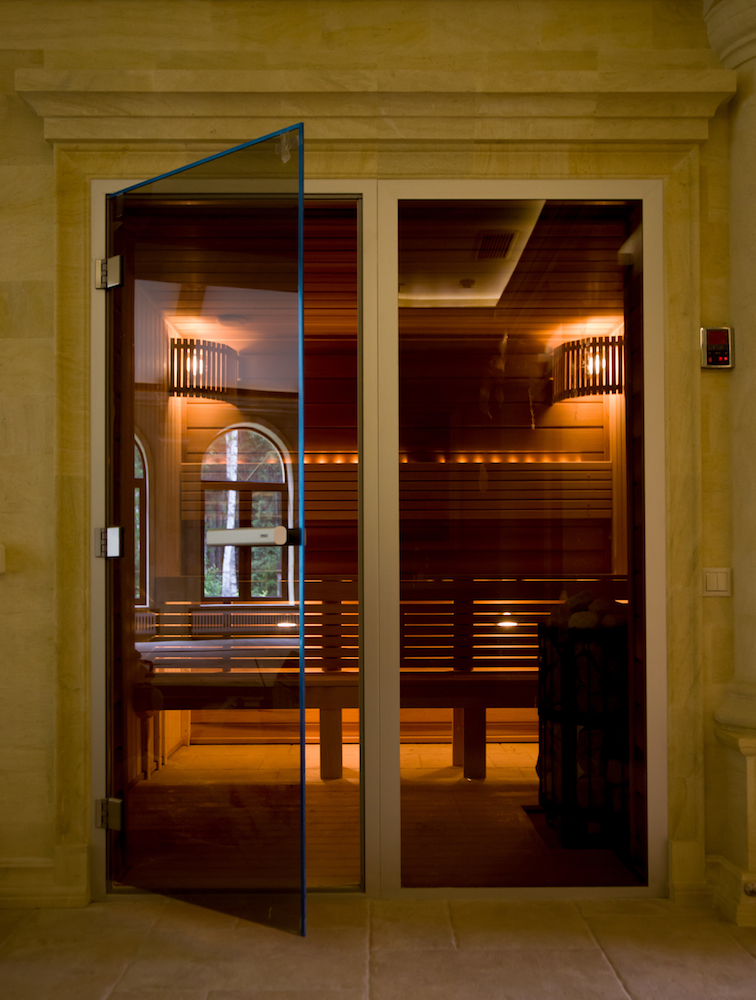
Most homeowners have long owned baths and saunas and intensively exploit these buildings. How to preserve the finish in the extremely humid and hot climate of the steam room, avoid the appearance of unpleasant odors and mold, and audit fire-hazardous components and structures?
- After each session, you must climb the wooden ladder, remove the shelf drains and sweep the floor throughout the room.
- After each session, it is advisable to wash the stands with a stiff brush (sponge, washcloth on the handle) dipped in boiling water.
- After cleaning, the room should be ventilated for at least three hours, and even better, the door and ventilation valves should be left open overnight. Drainage in the floor should be done in a vertical position, leaning on shelves or walls.
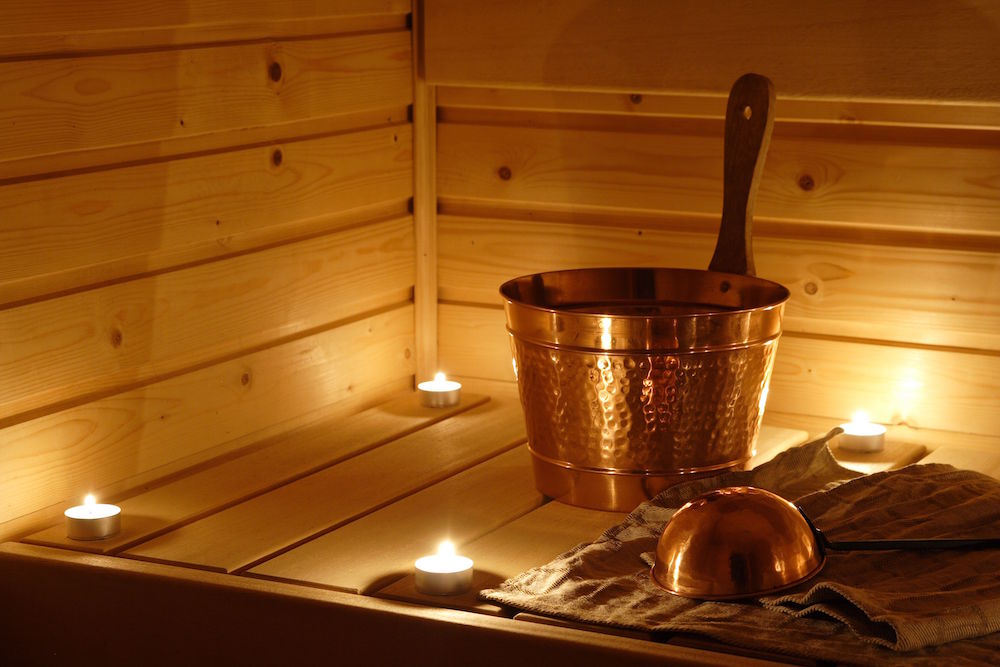
- Approximately every 10 sessions it is necessary to wash the stones and remove the stone chips from the hearth. The stones are first cleaned with a hard sponge and plate cleaner, and then rinsed with clean water.
- Once, and preferably twice a year, the walls should be covered with a special varnish for the sauna, and the shelves should be impregnated with oil. Before this, the contaminated surfaces are cleaned with a fine mop and sanded with sandpaper (P100 or P120). Deeper fungal infections can be soaked with a chlorine-based disinfectant, but after that, the strong smell of chlorine will linger indoors for several days.
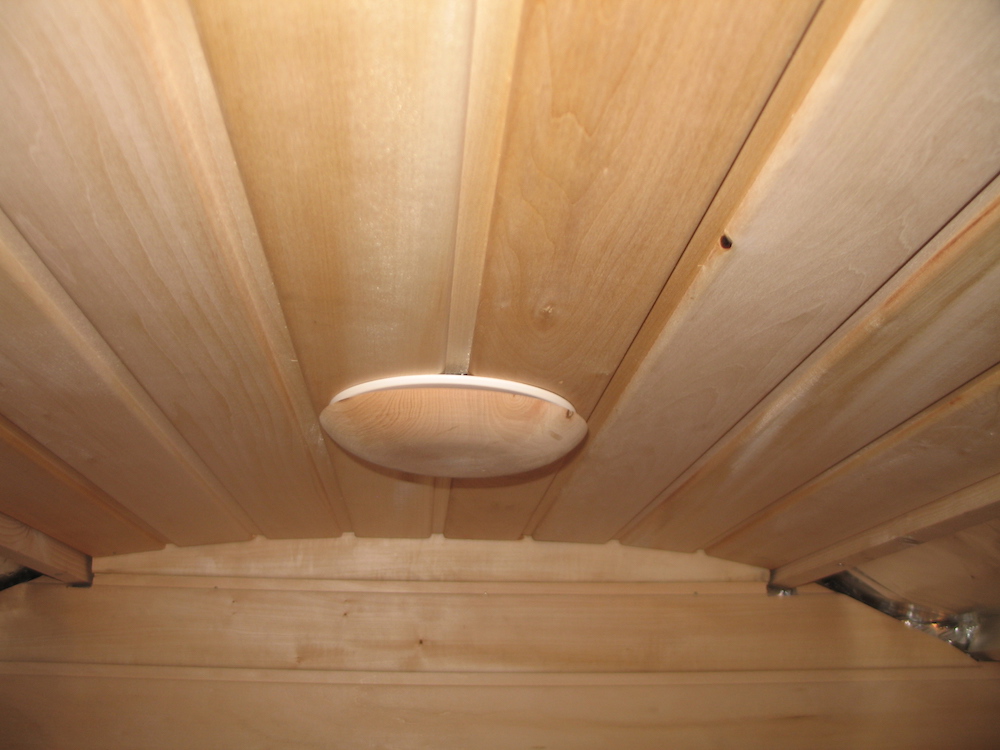
- It is necessary to periodically check the operation of ventilation valves and channels: dust, dirt and cobwebs can significantly reduce the throughput of the hood.
- If the heater is wood-burning, the chimney must be cleaned at least once a year, otherwise there is a risk of soot catching fire in the chimney. And of course, we must not forget to remove the ash from the ash box every 2-3 fireboxes, otherwise the firewood simply will not flare up. At the electric heater, according to the instructions, you need to occasionally tighten the terminal clamps – manufacturers recommend inviting a specialist for this.
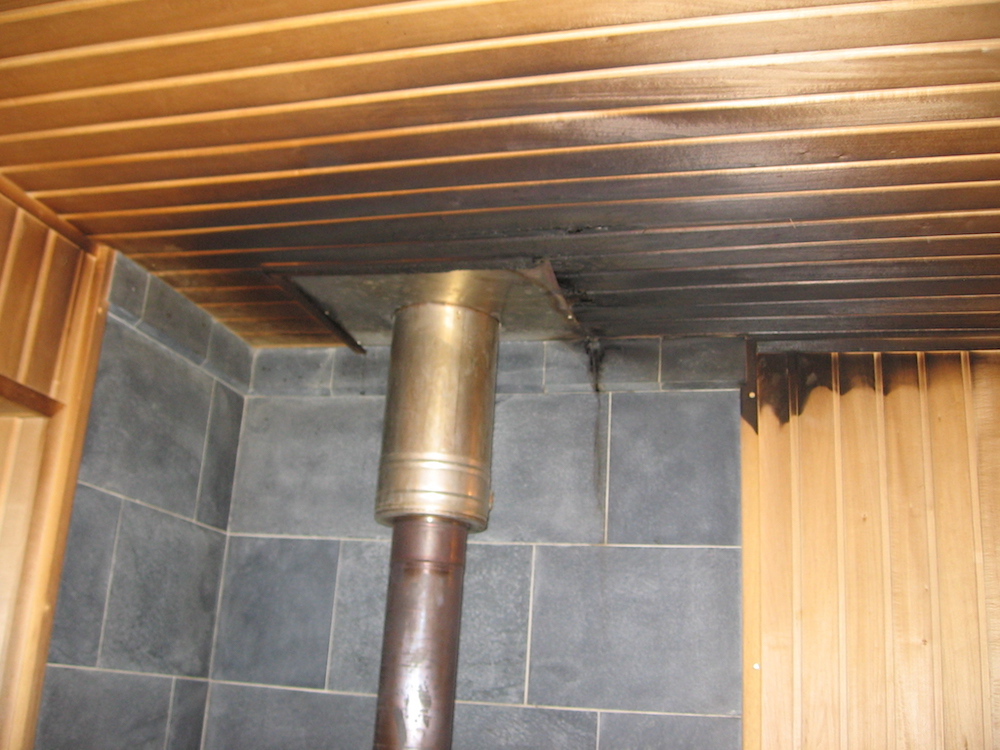
With a regular increase in temperature, the wood gradually changes color and begins to char. At a certain point, it can automatically ignite at a temperature of 200-250°C
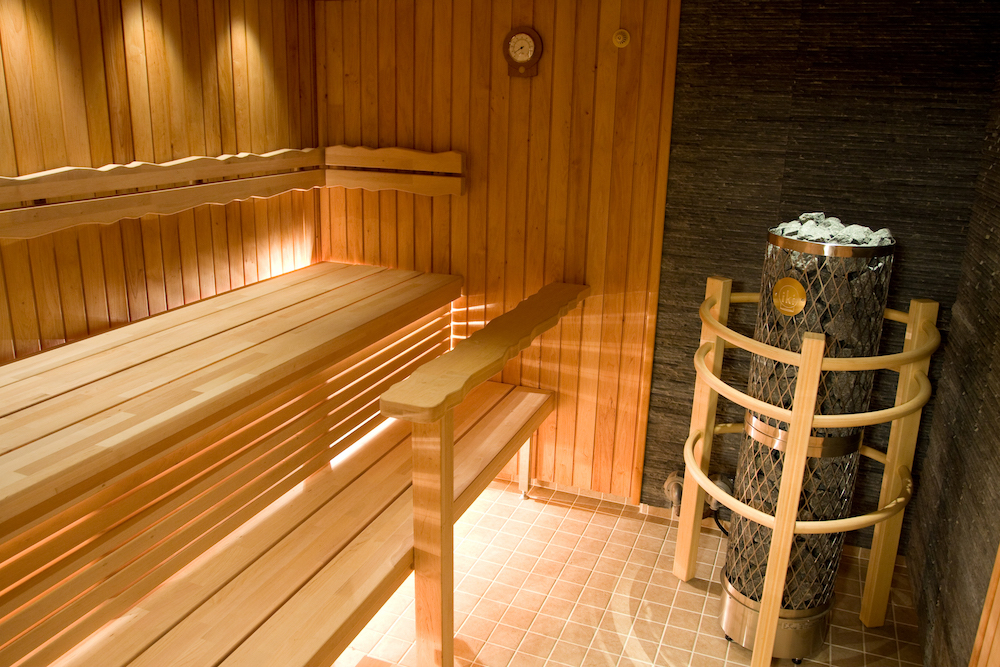
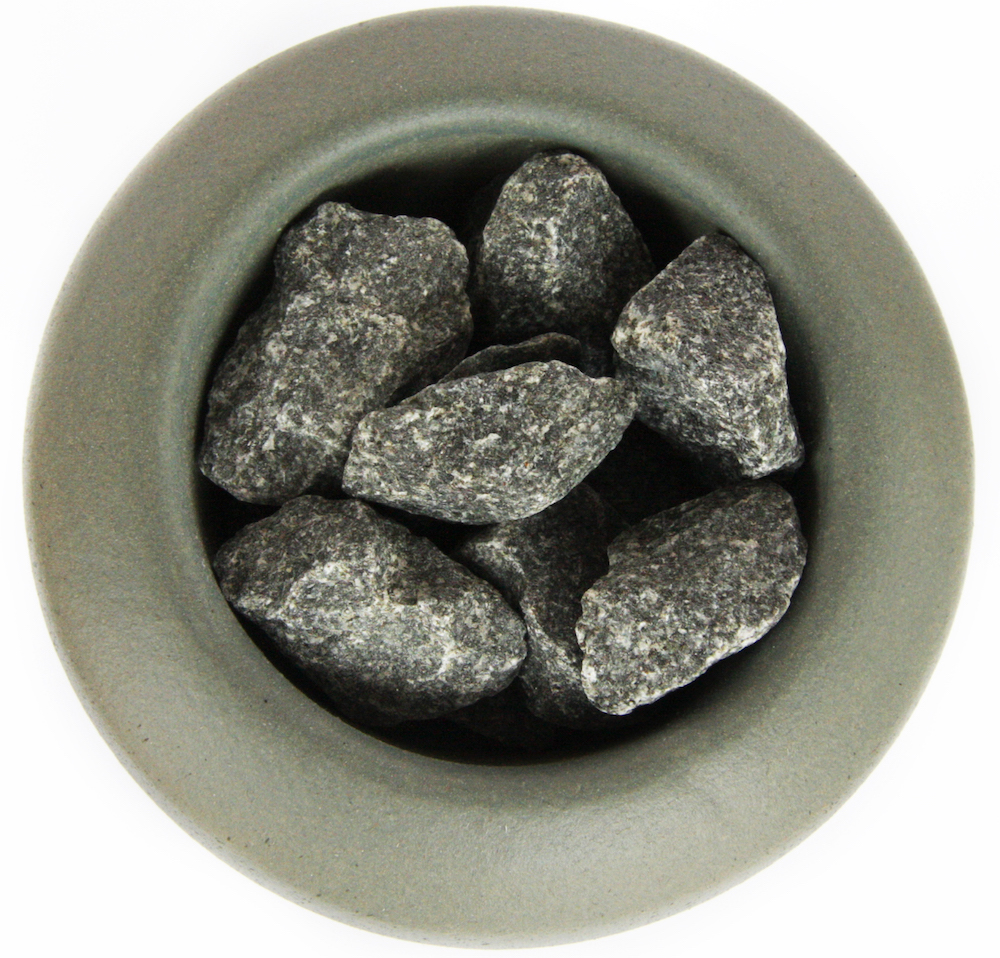
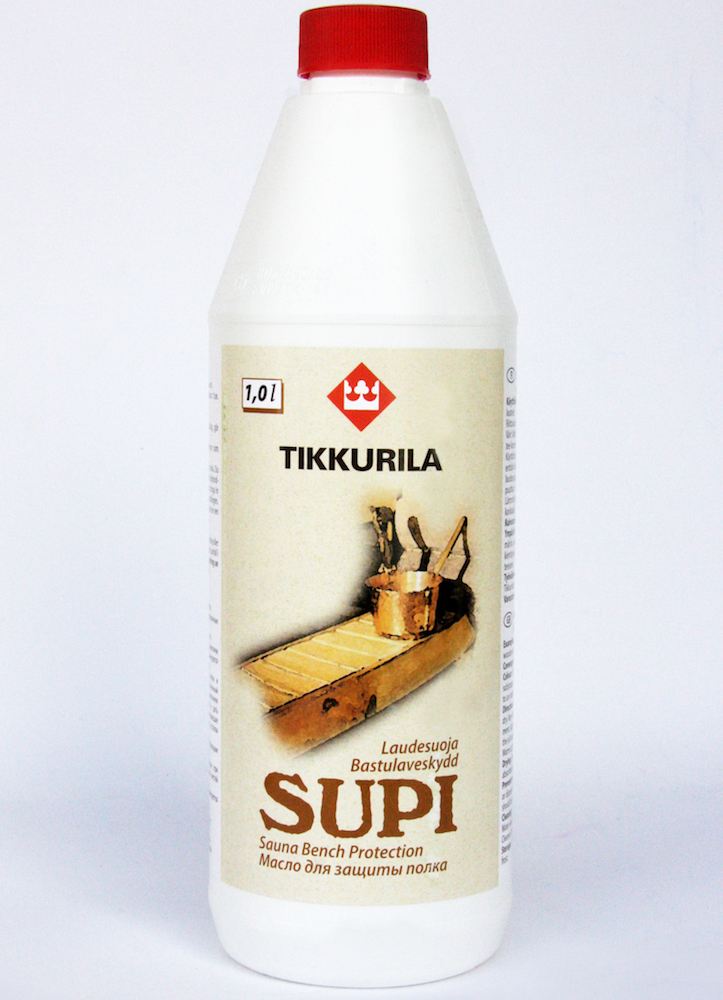
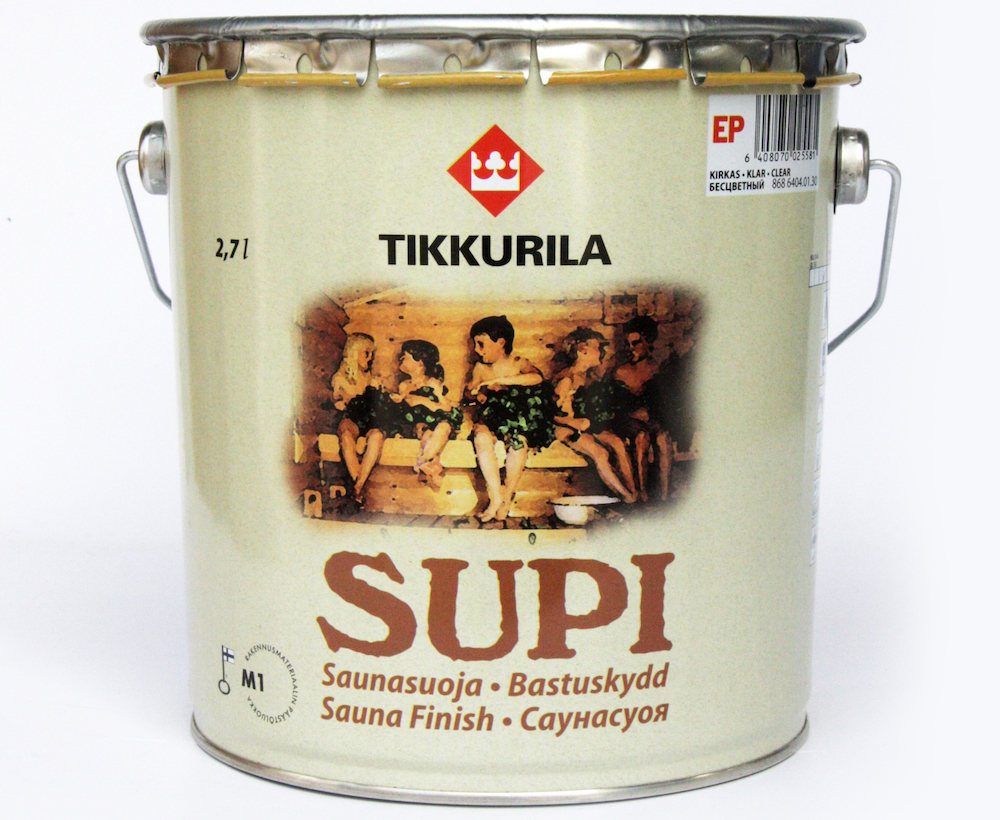
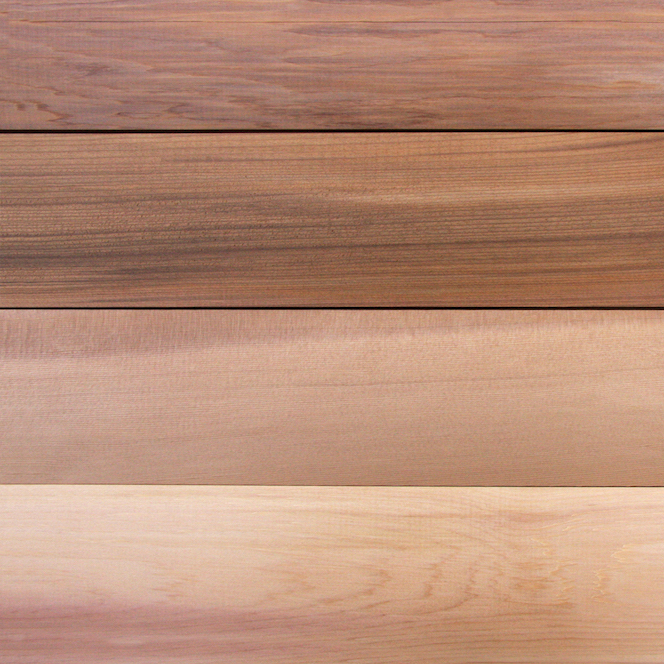
Bath is a place where a person receives a charge of vivacity and a surge of strength. But it is also a constant “headache” of how to keep it clean – without fungus and signs of rotting wood.
After the construction of a wooden sauna, happy owners have many questions: “How do we process the sauna inside?” ”, “How to keep the bathroom in its original form? How do you take care of your bathroom?
How do we treat wood from decay?
In the modern world, there are many drugs that will help in the treatment

Wood in the sauna and the preservation of its original appearance. Often, antiseptics are chosen to prevent rotting of wood and damage by various fungi. But since we are talking about a bathroom, first of all, you should pay attention to the environmental friendliness of the drug. Inside the bath or sauna, it is advisable to treat with a water-based disinfectant. As a rule, after absorption and drying, these antiseptics do not change the color of the wood and remain harmless to humans.
One of the modern and proven means for protecting wood inside baths and saunas is the Russian-made antiseptic NEOMID 200. It can process not only the wooden surface inside baths and saunas (walls, ceilings, floors, doors), but also shelves and benches . Excellent protection of wood from decay, from harmful wood insects for up to 25 years. Ideal for processing in conditions of frequent temperature changes and high humidity. It is economical, as it is usually presented in the form of a concentrate, which is diluted with water.
When treating the bathroom, pay special attention to the subfloor and crowns – treat them with stronger disinfectants, as they are in constant contact with soil and moisture. A folk remedy, previously used very widely, is the treatment of wood with machine oil, used to protect against mold and fungus. The method is effective, but not at all environmentally friendly. Of course, the temperature below the lower floor is directly below the temperature of the steam room itself, but the toxic fumes will still rise and poison the pleasure of visiting the steam room.
It is best to use special disinfectants. For example, the antiseptic preservative NEOMID 430 ECO. Designed to enhance the protection of wood in harsh (wet) operating conditions, including prolonged contact with soil and moisture. The concentrate protects wood from damage by moulds, mosses, algae and wood-boring insects for up to 35 years. And most importantly, after applying it, you no longer need to cover the wood with additional products.
What to do if a wood-destroying fungus (mold, blue) has already appeared on the tree?
A tree that has not been treated with protective compounds is easily susceptible to infection by various microorganisms, which in the future will quickly destroy your favorite building. Infection is possible during construction and during transportation of wood. Improper ventilation, high humidity, temperature changes and contact with the soil are the main enemies of wood and the “gateway” for mold spores.
If you have already noticed areas where stains and wood-destroying fungi have appeared, immediately take measures to destroy them! If we talk about the bathroom, then the mold is doubly dangerous. When the temperature rises, fungal spores that enter the respiratory tract can cause serious health problems, allergic reactions, and even poisoning.
There are several ways to clean mold from wood. The first is mechanical, but this is a rather long and laborious process. The second is to resort to folk remedies. One such method is the treatment of wood with resin, which is heated before use. Fast and cheap way. But keep in mind that after drying, the surface will remain sticky.

Another folk remedy suitable for the steam room is the treatment of wood with tea tree oil. We pre-treat the affected boards with soda and pour vinegar. We are waiting for the completion of the reaction and washing
Hydrotherapy area. After drying, treat with tea tree oil diluted in warm water. A simple and environmentally friendly way, but you need to consider the fact that the likelihood of mold in the future is very high. And to call such a method cheap will not work!
More effective and reliable protection – modern drugs. Now on the market there are many compounds that will help get rid of mold fungi. One such product is NEOMID 500 Wood Bleach, a proven product that restores the natural color of wood, effectively eliminates wood stains and wood-destroying fungi, and removes greyscale. After bleaching, it is recommended to wash off the remaining solution from the surface of the wood. In order not to encounter this problem in the future, it is advisable to treat the tree with an antiseptic and seal it with a film-forming composition, that is, varnish or oil.
How do you treat the sauna inside after disinfection?
Often, antiseptic treatment is not a complete protection for wood. After all, an antiseptic has the ability to wash out, and especially in such a humid room as a bathhouse. Most manufacturers recommend applying paints and varnishes after an antiseptic. We are still talking about baths, so do not forget when choosing paintwork materials to take into account the fact that the material must be environmentally friendly !!! For wood processing inside the steam room, for example, the usual alkyd-based paints and varnishes (PF, NC, GF, etc.) are not suitable
Give preference to varnishes for rooms with high humidity and constant temperature changes, water-based. So, for example, after painting with an antiseptic, it is worth treating the ceiling and walls in the bathroom with NEOMID SAUNA acrylic varnish for baths and saunas. Forms a protective transparent film against dirt and water, prevents darkening of wood, environmentally friendly.
How do you take care of the shelves and benches in the sauna?

An important element of any steam room is a shelf. We all know that this is a place where people sit or lie down, warming up their body to a certain temperature. Therefore, it is important to keep the shelves or bench clean and tidy.
After each visit, the bathroom should be wet cleaned. Be sure to remove all fallen leaves from brooms from the shelves, and remove soap residue and sweat with warm water. Periodic machining is an effective way to keep shelves in perfect condition. At the same time, it is worth paying attention to the fact that the wood after such processing remains smooth. Indeed, under the influence of temperature, the wood expands, and the risk of getting scratches or splinters increases.
If we talk about protective compounds for shelves, remember – polishing the shelves is not recommended! It is better to use a special oil for baths and saunas NEOMID. Protects wood from dirt and moisture, prevents blue staining and increases the life of wood. The oil creates a decorative finish that enhances the natural grain of the wood without altering its color. It is a safe oil in contact with human skin. No irritation. Given that oil, unlike varnish, forms a more elastic waterproof film, such a coating will not chip off. Because of these properties, it is often used to treat floors in laundries.
How to paint the stove in the sauna?
The most important thing in the bathroom is the stove. Metal ovens are especially popular. Although it is metal, it requires no less maintenance than wood. It is not recommended to leave the stove unpainted, as rust will begin to appear under the influence of high humidity. When choosing paints and varnishes, consider the fact that the paint must be heat-resistant. Otherwise, the paint will quickly become unusable, and you will spend time and effort on correcting the shortcomings of this coating.

KO-8101 silicone enamel is best suited for oven enamel. This heat-resistant enamel does not emit toxic fumes and can be used for painting stoves, fireplaces, barbecues, chimneys. Enamel K-O-8101 withstands temperatures up to 1000°C, depending on the selected color.
Heat-resistant varnish KO-85 can be used for painting decorative stone, brick and concrete surfaces. Lacquer can be painted both outside and inside. Heat-resistant paint does not reduce the vapor permeability of the material, after drying it does not emit toxic fumes.
We have only covered a few of these widely used bath treatments. However, do not forget that the use of even the most modern and expensive formulations and lotions will not be effective if you do not follow a number of simple care rules. Therefore, after each use, the sauna should be well ventilated. You can open windows, doors and ventilation systems. It is necessary to sweep all the water from the ground, trying to drive it into the cracks or into the drain hole. Soap residues and foam should also be removed from the floor. From time to time it is necessary to carry out general cleaning, paying attention to hard-to-reach places where mushrooms most often appear.
Remember that proper care and the right materials will help keep your sauna looking its best for years to come!
Sauna requires constant attention to serve its owners for a long time and without fail, you just need to follow a simple instruction. While the situation in the sauna is not working, you can take a regular brush and water. After using the sauna, condensation remains on the wall, ceiling and in general on everything, and it is much more aggressive than tap water. Here we will be saved by a brush, which, for the sake of convenience, should be kept nearby, and a person leaving the sauna is harsh – he must spend less than a minute of his precious time and wipe shelves, walls, etc. wet brush. These are, of course, some inconveniences, but a fairly simple procedure will save the sauna from aggressive pollutants that will decompose, and therefore from even higher costs in the future.
And that’s not all, if the sauna has a wooden mat or net, it must be taken out of the sauna at least once a week and cleaned there.
After cleaning the sauna, it must be opened, ventilated and dried well.
If the mold is still spreading, you can first try to remove it with bleach – this goes for the wood grate. For walls, floors and ceilings directly inside the sauna, you need to use special detergents. But do not delay cleaning, this is important, as mold spreads very easily.
Among other things, you need to take care of the drain and clean it well so that germs do not multiply there and there is no unpleasant smell of sewage.
Disinfection with special agents must be carried out periodically.

How to wash off the soot in the shower
The most difficult thing is to wash the soot in the bathroom on the wooden walls and ceiling. It cannot be removed with soap and water. Soot does not dissolve well and the surface is simply smeared. Wood is hygroscopic, soot particles penetrate inside along with water, penetrating into small pores and cracks. It would be impossible to destroy them after that. You will have to remove the top layer of stain along with the soot.
How to clean, refresh and wash the lining in the sauna from soot, dirt, sweat and grease; Cheap and cheerful
Mechanical method
Soot from bricks and wood can be cleaned with a stiff brush
To effectively remove black deposits on walls and ceilings and without the risk of getting into the pores of the wood, it is necessary to scrape them off. This is long and tiring, as it requires a lot of physical effort even when processing flat surfaces.
Carbon deposits should be removed from joints and cracks using sharp tools or special brushes. In addition, these actions damage the upper layers of the tree with which the steam room is sheathed. The result is clean walls without traces of dirt.
Chemical method
Using detergent to remove soot saves time and effort. But when choosing chemicals, you need to be careful.
The basis for the formation of soot is carbon, and it practically does not dissolve in anything. Using harsh chemicals with acids will damage the structure of the wood. Alkaline detergents are used to remove carbon deposits. They remove soot, but do not harm the wood flooring.
Removal of soot and soot in protective clothing
Before cleaning the sauna in any way, it is necessary to take measures to prevent the spread of removed soot particles:
- Vacuum all dirty surfaces.
- Cover the floor and shelves with polyethylene or paper.
- Wear protective clothing, rubber gloves on your hands and a face mask.
- Remove the top layer of soot with a broom or a stiff brush.
Wood is a natural material with high hygroscopicity. Wooden surfaces, together with water, are able to absorb any pollution – soot, soot, sweat, dust, and so on. Therefore, floors, walls and ceilings made of wood covered with soot are not recommended to be washed with water.
When considering how to wash the soot in the sauna on walls and other bases, the following means should be excluded:
These products are approved for final cleaning after wood decarburization.
To clean the walls and floor in the sauna from plaque and soot, all work is recommended to be carried out in personal protective equipment:
Many owners are wondering how to clean the sauna from dirt and soot with their own hands. Two cleaning methods are available:
You can safely remove soot from ceiling, wall and floor surfaces using special tools – a scraper with a sharp base or a spatula. They allow you to clean every centimeter of the surface from dried dirt. To put this cleaning method into practice, you will need a lot of free time and physical endurance.
In order to avoid serious contamination of the surface, the floor and walls must be thoroughly cleaned with a soft brush intended for wood after each firing of the sauna stove.
To simplify the task of cleaning soot, experts recommend using a grinder with a petal-type circle with a diameter of up to 12.5 cm and a grain size of 35 units. Remove dust from surface cleaning with a clean cloth and soapy water.
We recommend MAZBIT PLUS Smudge and Grime Remover
If the fight against fungus on wood is a difficult task that requires certain skills, then getting rid of soot is quite simple. Especially given the capabilities of the modern chemical industry.
Therefore, if you find that the cause of black walls lies in their soot, you urgently need to look for a way to clean the sauna lining from soot.
It should be noted right away that you should not experiment with cleaning soot, and even more so resort to folk remedies.
Since, for example, if you clean the lining with a solution of water and vinegar, then there will be little effect, but you will cause enough damage. The fact is that soot becomes sticky when wet and cannot be washed off. But it will absorb more and then cleaning will become more complicated.
Brushing is also not worth it, due to high absorbency. In addition, if the impact is too strong, there is a possibility of damage to the cladding itself.
Mechanical dry cleaning
To clean wood materials, including lining and timber, you can take a pointed spatula or scraper. These devices will clean every surface area without the use of wet cleaning. This is a rather laborious method that requires physical strength and endurance and takes a lot of time.

To simplify and speed up the work, you can use the grinder. Use collapsible discs with a grain of 35 and a diameter of up to 12.5 cm. After such cleaning and processing, dust will remain on the surface, which can be removed with a clean cloth and soapy water.
To prevent the accumulation of dirt, soot and dust on the walls, as well as to prevent the formation of dangerous, old and stubborn stains and dirt, carry out preventive cleaning regularly. Clean the floor and walls with a soft wooden brush after each sauna fire. Once a month, do a wet cleaning with soapy water.
Don’t forget to clean the chimney in the oven regularly. You need to do this even if you rarely heat the sauna. The shower accumulates soot, dirt, dirt and debris. As a result, the current deteriorates and it becomes difficult to start the furnace. Due to soot and debris, carbon monoxide is formed in the channels of the furnace pipeline, which is harmful to human health.
What not to use
Classic brushes are not recommended for cleaning wooden surfaces. After such treatment, dirt and soot will be absorbed even more. In addition, the brush can damage the top layer of the lining.
It is also recommended to clean the lining with folk methods and means. Soot and soot after treatment with vinegar, ammonia and other similar compounds become sticky. As a result, blackness is difficult to wash off. In extreme cases, you can use soapy water or dishwashing detergent diluted with water. However, they will not be able to remove stubborn stains and are more suitable for preventive washing.
Do not use powders or abrasives, otherwise they will scratch the surface. This will not only spoil the appearance of products. Moisture and harmful bacteria will begin to accumulate in cracks and scratches, which will soon destroy the wood.
Ways to clean the walls from soot
With the help of mechanical devices (metal brush, grinder, special nozzle for a drill), a layer of soot on a tree is removed. You have to dig deeper to remove the dirt from the top layer of the tree. Such cleaning can be done in the bath no more than 1-2 times, so as not to violate the tightness of the rafters.
Wash off the soot with ordinary detergents. This method is laborious, because it takes a lot of effort to remove soot from an untreated tree. The end result is not always satisfactory, since soot contains resinous substances in its composition. When exposed to moisture, it rubs against the surface and penetrates into the cracks and joints between the logs. How to remove soot in the sauna to really clean the room?
Special chemicals containing surfactants must be used to remove soot from wood. A universal tool that quickly and effectively removes all dirt from the walls.
Prevention
So that the lining does not turn black and does not deform, it is enough to follow a few simple recommendations:
- If the facade of the building is sheathed with clapboard, it should be installed at a small distance from the surface to be improved;
- After covering a wall, floor or ceiling with special panels, building materials must be processed (primed, varnished, painted, etc.);
- In a clapboard-lined room, a good ventilation system must be equipped;
- If it is not possible to install fans, ventilate the room regularly;
- Once every six months, the sheathing board must be impregnated with a special protective compound that reduces the risk of mold and fungus and protects building materials from atmospheric precipitation (how is lining treated with protective agents?).
And the last thing: the better the lining used for interior or exterior decoration, the less time and effort will be required in the future to restore the original look of the lining.
How to wash off the soot in the shower
Owners of private baths and saunas often face the problem of soot deposits on walls, ceilings and furniture. Most often, natural wood without processing is used for the construction of a bath. The tree quickly absorbs water, as well as soot particles that penetrate deep into the tree and are difficult to remove, so it is very important to know how to quickly and efficiently wash off the soot in the bath.
Soot particles are so small that they can easily enter the human respiratory system and cause serious illness, so you need to clean up soot after a fire as soon as possible. It is best to call the cleaning company employees who have a stock of knowledge in this area, all the necessary tools and a set of chemical compounds.
After a fire, the sauna should be cleaned as soon as possible, as a lot of harmful substances remain after a fire. Soot forms an oily film and penetrates deeply into the surface of the wood. To remove it, you must comply with safety requirements and have protective equipment: a respirator to protect the respiratory tract, rubber gloves that protect the skin, a hat, preferably goggles to protect the eyes. Do not use abrasives for cleaning, as they may scratch the wood surface, and harsh chemicals may damage the material.
The wooden surface of the sauna can be cleaned by hand with sharp scrapers or similar tools. You need to get rid of soot very carefully, working through every centimeter, so this method requires serious effort and a margin of time. An alternative option would be to clean off the carbon deposits after each new heating of the bath with a stiff brush so that the plaque does not penetrate deep into the wood. Both options take a lot of time and effort with low efficiency and the risk of damaging the wood.
You can make the process easier with a grinder, but after using it, the dust is washed off with soapy water, which is very inconvenient and the result does not always live up to expectations. With this treatment, only the upper part of the soot is removed, and the smell remains. The disadvantages of this method include a high risk of damage to the wooden surface of the bath and the occurrence of scratches that spoil the appearance of the tree.
Chemical soot removal formulas quickly and effectively remove dirt from the wood surface of the shower and push it out.
The advantages of the chemical composition include high efficiency, the absence of harmful elements and toxins in the composition, economy in consumption, as well as ease of use and safety of use.
Before using the chemical composition, it is recommended to carefully study the instructions and follow them in the process of working with chemistry. The application time of the product depends on the composition and manufacturer. If chemical compounds come into contact with the skin or mucous membrane of the eyes, rinse the affected areas with plenty of water and consult a specialist.
How to remove soot from the walls and ceiling in the sauna
Soot on walls and ceilings is removed in just a few steps. The floor must be covered with cellophane, and it is recommended to seal the joints with adhesive tape so that the removed soot does not penetrate the floor. Plaque can be removed with a vacuum cleaner or a dry broom with jerky movements, and then the walls and ceiling can be treated with a sponge with special impregnation.
The chemical composition is left on the surface for the specified period according to the manufacturer’s recommendations, and then washed off with warm water along with the remaining soot and soot. Repeat if necessary. After finishing the treatment, let the surface dry well.
ammonia
A very effective remedy. When treating walls and ceilings with it, be sure to wear a respirator so as not to get poisoned. Apply ammonia to a soft, clean cloth and wipe the walls. This method of cleaning has its drawbacks – an unpleasant odor remains for a long time. Disposable ventilation also does not help.
Constant moisture in sauna leads to the formation of mold or mildew. Therefore, even after cleaning the surface from soot, soot and soot, it is necessary to carry out disinfection. For this, antiseptics diluted in water are suitable: Domestos gel, ethyl alcohol, potassium permanganate, a solution of salt and copper sulfate, dissolved in water in a ratio of 18 g, 44 g per 1 liter of water, respectively.
Moreover, after cleaning and disinfection, protective agents can be applied to the surface, which will repel dirt and prevent it from penetrating deep into the wood structure. This manipulation allows you to save the appearance and elegance of the steam room.
Important! Never use soapy water or sponges. By wiping the surface, all particles will penetrate the wood, and it will be impossible to remove the dirt. The only option in this case is to remove the woody layer along with the contamination. But this is an unreliable practice, because then the soot will accumulate more actively.
Chemical cleaning methods
If the darkening penetrates deep into the thickness of the plate, it is impossible to remove it mechanically, since the removal of the thickening leads to deformation and complete destruction of the finish. Folk methods that have been developed over the years on how to whiten a dark liner indoors involve the use of bleach or regular bleach. Processing should be carried out only in a well-ventilated area, wearing a respirator and gloves. This method is very effective, but fumes that are released for a long time can be harmful to health. This option is definitely not the answer to the question of how to whitewash the lining in the sauna ; When heated, chlorine residues evaporate and are harmful to human health.
Specialized eyeliner whitening products
In order to safely bleach the health bath liner, specialized water-based cleaners have been developed. The substance is diluted according to the scheme indicated on the package, it depends on the manufacturer’s recommendations, and is applied over the entire surface with a brush or roller. The surface should be left for 15 minutes, and the liner will turn white before the eyes. After the exposure time, the mixture is washed off with warm water using a sponge.
When the process of cleaning the lining from blackening is completed, the wood should dry well. After complete drying, protective mixtures, a primer and the selected paint are applied.
How to properly wash the sauna

Proper care of the sauna prevents pollution of the room, contributes to the prevention of mold and fungus, so the question of how to properly wash the sauna is never idle.
What to prepare for washing

It is important to remember that comfortable long-term use of the premises for taking water procedures requires competent care, compliance with certain sanitary and preventive rules.
For washing it is necessary to prepare:
- Hard brush (sponge, washcloth on the handle);
- stove cleaners;
- container with clean water;
- Chlorine-based disinfectant;
- well-honed cycle;
- bark (P100 or P120);
- clean rags;
- rubber gloves;
- broom for removing dust, dirt and cobwebs;
- Ladle and ashes.
During washing, it is advisable to check the drain with a dry seal, the chimney passage assembly, and when using an electric heater, according to the instructions, periodically tighten the end clamps.
Step by step instructions

Intensive use of the sauna, humid regime and high temperature of the steam room negatively affect the finish, can cause unpleasant odors and the spread of mold, so you must strictly follow the washing rules.
- Use a broom to remove dust, dirt and cobwebs from the room.
- Remove the ashes from the hearth and the soot from the chimney.
- Clean the stones with a brush and detergent and rinse with clean water.
- Clean the cycle and sanding bars with sandpaper.
- Wash the shelves and wipe them dry.
- Soak the shelves with special oils.
- Treat all places covered with fungus or mold with a chlorine compound.
- Raise the wooden ladders and stand them upright to dry.
- Remove the roof strainers.
- Scrub the floors in all rooms with a hard-bristled brush dipped in hot water.
- Ventilate the room well.
At the final stage, it is recommended to inspect all fire hazardous connections and check the integrity of structural elements.
Taking care of yourself in the sauna is not difficult, but only regular and proper washing of the room is the key to good steaming, getting a boost of energy and complete recovery of the body.
- Articles
- Proper care of the bath and sauna
Proper care of the bath and sauna
The Russian banya used to be built from hand-cut logs, now glued or dry logs are more often used in construction. But wood was chosen as the building material, and there are explanations for this. Wood is an aesthetic, environmentally friendly and durable material that allows you to create an atmosphere of home comfort in the baths. But during operation, the structure, like its furniture, is exposed to atmospheric influences: moisture, fungus, mold, and so on. As a result, wood loses its valuable properties, and its service life is reduced. Proper operation of baths is an important point, so in the article we will analyze in detail the main points that are paid attention to.

- Bath rules
- Elimination of unpleasant odors in rooms
- Fungus appears in the sauna
- Useful tips
Sauna cleaning rules
Sauna require special care after the completion of procedures. In the steam room, it is strictly forbidden to cover the ceiling and walls with compounds that are harmful to health due to high humidity. The wooden surface has the ability to “breathe”. When cleaning in the steam room, do not use strong pressure, dousing with a hose. The room will not have time to ventilate and dry out, which in the near future will lead to mold growth. In addition, the high pressure of the jets will damage the area of the skin that needs to be replaced.
After taking action
After visiting the bath, all the walls of the steam room and the canopy should be wiped with a dry cloth. The door is left open so that the room is ventilated as much as possible. The damper on the pipe opens completely, and the water tanks, on the contrary, are tightly closed with lids. The doors to the sauna open themselves for 2-3 hours.

Condensation accumulates on furniture, ceilings and walls, which negatively affects health in the future. That is why, upon completion of the procedures, it is recommended to pour water on all surfaces, and then remove the remaining moisture.
Cleaning the sauna
Proper operation of the sauna and bath is impossible without additional cleaning, and it is recommended to do this once every two weeks. To do this, it is advisable to purchase detergent compositions that can remove unpleasant odors and clean the surface of bacteria. Before use, be sure to carefully read the detailed instructions on the product packaging – it indicates the optimal wood processing time (about 30 minutes). The kit often includes brushes or rollers, if not, then purchase the tools separately. To clean the steam room, it is preferable to use an absolutely safe water-soap solution that does not contain harmful toxins.
The seats become covered with a thick layer of dirt during prolonged use. It is eliminated with coarse sandpaper or a grinder, if any. Events are held once a year, ensuring the integrity of furniture, floors, walls and ceilings.
Important! The heater is heated in such a way that there is enough heat to dry the rooms after the completion of the bath procedures. It is advisable to add some firewood to ensure efficient drying of the building.
Also, do not forget about drainage equipment, clean and repair in a timely manner if necessary.
Elimination of unpleasant odors in rooms
Special essential oils are used to purify the air in sauna and remove unpleasant odors. But pouring oil on a stone surface is not recommended. A few drops are added to a tank of hot water and placed in the corner of the steam room.

The aroma will fill the room and soak into the wood paneling – lining or house. Odors are also removed using ultraviolet light or ozone. When the premises are completely dry, it is necessary to turn on the ultraviolet emitter for half an hour. But the main task remains the organization of high-quality ventilation.
Fungus appears in the sauna
Why are mushrooms dangerous? It contributes to the destruction of a wooden structure, so its formation on the roof is extremely unacceptable, especially for a steam room. Fungal formations pose a threat to the health of people with severely weakened immunity, as well as children. If you go to a bathhouse infected with a fungus more often, then there is a high risk of developing diseases of the respiratory system, joints, headaches and general malaise. The appearance of allergic reactions is a sure sign of wood damage by fungi.
Saunas are an ideal environment for the rapid development of a biological pest. The defeat occurs on the lower crowns of the log house and on the floor. It is important to prevent its occurrence in advance by insulating the base under the structure.

Precautions
Even at the construction stages of the building, measures are taken to protect all wooden elements with the help of compounds that are offered in specialized stores. Sometimes a hydrophobic solution is prepared independently (wax, drying oil, turpentine, rosin) or ready-made products are purchased. The composition is heated in a water bath at high temperature.
How to remove fungal formations?
To destroy biological pests, choose one of the following solutions:
- full or partial replacement of damaged areas and further burning of wood elements affected by the fungus;
- Treated with a special formulation of water and sodium fluoride;
- Elements of brine coating in gasoline.
These are the best ways to fix the problem, there are other ways, but they are toxic and unsafe for human health. At the end of the events, the steam room and washing room are thoroughly ventilated and dried with a stove.

What if prevention does not get rid of biological problems and attacks logs and floors? The only correct solution is to completely replace the affected areas, and clean the grates in the floor with special bleaching compounds.
Useful tips
Proper and high-quality finishing of baths and saunas improves the aesthetic properties of buildings and adds comfort. But keeping it in its original form is not an easy task.
For proper operation, it is enough to follow a few simple rules described below.
- Keep the steam room and sauna clean. After visiting the rooms, remove the dirt that has appeared, and wipe all the walls with a clean, damp cloth.
- Ventilate the building after each treatment. Let wood surfaces dry to prevent mold or mildew.
- Do a general cleaning with detergents once or twice a month. Clean hard, dirty places with sandpaper.
- Carefully monitor the performance of ventilation and drainage systems, eliminate accumulated blockages, and repair damage in a timely manner.
Let the bath please you with cleaning and steam for many years!
